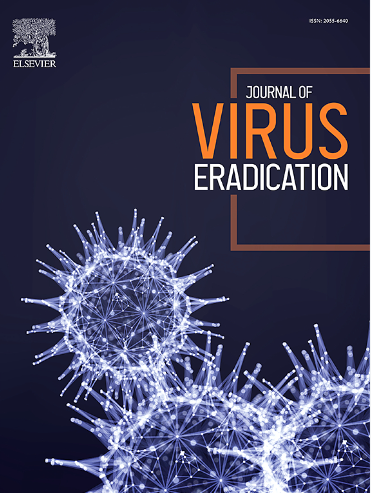The association between chronic underlying diseases and the clinical characteristics in adult patients infected with Omicron BA.1
IF 2
4区 医学
Q2 IMMUNOLOGY
引用次数: 0
Abstract
Background
The COVID-19 pandemic has been exacerbated by the highly contagious SARS-CoV-2 Omicron variant BA.1, which quickly became the predominant strain worldwide in early 2022. The COVID-19 pandemic has not only burdened healthcare systems but has also led to a new emerging medical question whether chronic underlying diseases (CUDs) are associated with clinical characteristics of populations infected with Omicron BA.1. The purpose of this study is to investigate the impact of CUDs on the clinical characteristics of adult patients (APs) with Omicron BA.1 infection.
Methods
We performed an analysis on 320 individuals who were admitted to Tianjin First Central Hospital for treatment in the initial largest outbreak of the Omicron variant BA.1 infection between January and February 2022 in Tianjin, China. Clinical data were collected during the treatment and recovery, including gender, age, vaccination, CUDs, clinical manifestations, and nucleic acid test. These data were statistically analyzed using SPSS software, version 22.0.
Results
Our findings suggest that 178 (56 %) out of 320 APs have CUDs at the time of COVID-19 diagnosis. APs with CUDs have a higher median age [55 (40–62)] compared to APs without CUDs [38 (30–47)] and lower vaccination rates [158 (89 %)] compared to APs without CUDs [138 (97 %)]. Multivariable logistic regression results indicate that CUDs and advanced age (≥60 years old) are unfavorable factors for the increase in the severity of Omicron BA.1 infection [age (≥60 years old), OR = 2.96, 95 % CI: 1.35–6.50, P = 0.01; CUDs, OR = 2.78, 95 % CI: 1.65–4.70, P < 0.001]. Meanwhile, we observe that APs with CUDs exhibit significantly elevated alanine aminotransferase (ALT), aspartate aminotransferase (AST), blood urea nitrogen (BUN), interleukin-6 (IL-6), and C-reactive protein (CRP) levels, and higher re-detectable SARS-CoV-2 RNA positive (RP) rates, while notably reduced lymphocyte levels compared with those without CUDs. Additionally, we propose that vaccination played a positive role in reducing IL-6 and CRP levels, and RP rates, as well as increasing SARS-CoV-2 specific antibody levels in APs with CUDs.
Conclusion
This research not only enhances the understanding of the association between CUDs and the clinical manifestations of APs infected with Omicron BA.1, but also offers valuable insights for preventing and managing Omicron BA.1 infections in this demographic. Moreover, it supports the policy of prioritizing vaccination for adults with CUDs.
成年欧米克隆ba感染患者慢性基础疾病与临床特征的关系
高传染性的SARS-CoV-2 Omicron变体BA.1加剧了COVID-19大流行,该变体在2022年初迅速成为全球主要毒株。COVID-19大流行不仅给卫生保健系统带来了负担,而且还引发了一个新的医学问题,即慢性基础疾病(CUDs)是否与感染欧米克隆BA.1的人群的临床特征有关。本研究的目的是探讨CUDs对Omicron BA.1感染成人患者(APs)临床特征的影响。方法对2022年1月至2月中国天津市首次最大的欧米克隆变异BA.1感染暴发期间在天津市第一中心医院接受治疗的320例患者进行分析。收集患者治疗及康复期间的临床资料,包括性别、年龄、疫苗接种情况、CUDs、临床表现、核酸检测等。采用SPSS 22.0软件对数据进行统计分析。结果320例ap中有178例(56%)在COVID-19诊断时患有CUDs。与没有CUDs的ap相比,患有CUDs的ap的中位年龄[55(40-62)]高于没有CUDs的ap[38(30-47)],而与没有CUDs的ap[138(97%)]相比,疫苗接种率[158(89%)]较低。多变量logistic回归结果显示,CUDs和高龄(≥60岁)是影响Omicron BA.1感染严重程度增加的不利因素[年龄(≥60岁),OR = 2.96, 95% CI: 1.35 ~ 6.50, P = 0.01;CUDs, OR = 2.78, 95% CI: 1.65-4.70, P <;0.001]。同时,我们观察到与没有CUDs的APs相比,患有CUDs的APs表现出显著升高的丙氨酸转氨酶(ALT)、天冬氨酸转氨酶(AST)、血尿素氮(BUN)、白细胞介素-6 (IL-6)和c反应蛋白(CRP)水平,以及更高的再检测SARS-CoV-2 RNA阳性(RP)率,而淋巴细胞水平显著降低。此外,我们提出疫苗接种在降低白介素-6和CRP水平、RP率以及增加SARS-CoV-2特异性抗体水平方面发挥了积极作用。结论本研究不仅加深了对感染了Omicron BA.1的APs的临床表现与CUDs之间关系的认识,而且为该人群预防和管理Omicron BA.1感染提供了有价值的见解。此外,它支持优先为患有腹泻的成人接种疫苗的政策。
本文章由计算机程序翻译,如有差异,请以英文原文为准。
求助全文
约1分钟内获得全文
求助全文
来源期刊

Journal of Virus Eradication
Medicine-Public Health, Environmental and Occupational Health
CiteScore
6.10
自引率
1.80%
发文量
28
审稿时长
39 weeks
期刊介绍:
The Journal of Virus Eradication aims to provide a specialist, open-access forum to publish work in the rapidly developing field of virus eradication. The Journal covers all human viruses, in the context of new therapeutic strategies, as well as societal eradication of viral infections with preventive interventions.
The Journal is aimed at the international community involved in the prevention and management of viral infections. It provides an academic forum for the publication of original research into viral reservoirs, viral persistence and virus eradication and ultimately development of cures.
The Journal not only publishes original research, but provides an opportunity for opinions, reviews, case studies and comments on the published literature. It focusses on evidence-based medicine as the major thrust in the successful management of viral infections.The Journal encompasses virological, immunological, epidemiological, modelling, pharmacological, pre-clinical and in vitro, as well as clinical, data including but not limited to drugs, immunotherapy and gene therapy. It is an important source of information on the development of vaccine programs and preventative measures aimed at virus eradication.
 求助内容:
求助内容: 应助结果提醒方式:
应助结果提醒方式:


